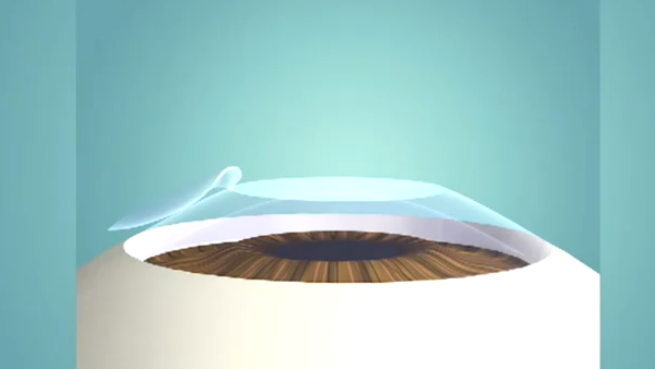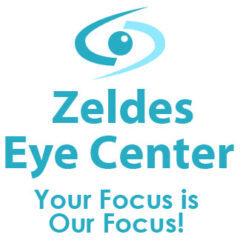Surface Treatments for Nearsightedness: an overview

Weighing the pros and cons of getting refractive surgery can be a daunting task. And for some, it may be one of the most important and scary decisions you will have to make. This blog post is aimed to give you some insight into surface treatments, an alternative to LASIK – taking away some of the stress and confusion you may have about the procedure.
Surgery Overview
PRK (photorefractive keratectomy), LASEK (laser epithelial keratomileusis), and epi-LASIK (epithelial laser in-situ keratomileusis) use a laser to reshape the cornea. By reshaping the cornea, these surgeries allow light to focus on the retina and thereby correct a person’s vision.
With PRK, the top layer on the surface of the cornea (epithelium) is removed. Then the laser reshapes the cornea. The laser removes tissue from the cornea very accurately without damaging nearby tissues. The layer grows back during the healing process. PRK may be used to correct nearsightedness and astigmatism at the same time.
With LASEK, the surface layer of the cornea is loosened and pushed to the side. After the laser reshapes the cornea, the surface layer is placed back over the cornea.
Epi-LASIK is similar to PRK and LASEK. With epi-LASIK, the surface layer over the cornea is lifted with a special machine. Like LASEK, the layer is replaced over the cornea after the laser reshapes the cornea.
PRK, LASEK, and epi-LASIK are sometimes called surface ablation. They are different from LASIK (laser in-situ keratomileusis) because they do not involve cutting flaps of the cornea.
Many people have PRK or LASEK done instead of LASIK because of the shape and condition of their eyes. LASEK may also be safer for people with certain lifestyles, such as professional athletes, police officers, and firefighters.
What To Expect After Surgery
PRK, LASEK, and epi-LASIK are outpatient procedures. They are done under local anesthesia in a surgeon’s office or a same-day surgery center. The procedure takes about 30 minutes, most of which is spent preparing your eye and the laser. The actual treatment time is very short. Most treatments take a minute or less (treatment for farsightedness may take longer than a minute). The entire process may take about 2 hours, including preparation time, care right after the surgery, and paperwork.
After surgery, you may wear a patch or contact lens on the eye and get a prescription for pain medicine. Someone must drive you home and then back to the surgeon’s office the next day. During this second visit, the surgeon will examine your eye and prescribe eyedrops to prevent infection and reduce inflammation. More follow-up visits are required, usually the next week and then throughout the first year after surgery.
- Recovery from these surgeries is longer and more painful than recovery from either radial keratotomy (RK) or laser in-situ keratomileusis (LASIK). But you may return to your normal activities within a few days.
- For 2 to 3 days after surgery, some people may have pain, aching or throbbing, or a feeling that there is something in the eye.
- Your vision will be reduced for several days after surgery. Your vision may remain blurry for days to weeks after surgery. Do not drive until your vision has cleared.
- For 2 weeks after surgery, avoid vigorous sports, eye makeup, and activities that may get water in the eye. The surgeon may recommend that you shower before the surgery and then avoid showering for a day or two afterward to keep from getting water in the eye.
Unstable vision is common in the first 3 months after surgery and may last for up to 1 year. The surgery does not always give 20/20 vision. So you may still need to wear glasses or contact lenses after the surgery. Your vision may vary slightly over the course of a day (although not to the point that you would need two pairs of glasses).
How Well It Works
PRK, LASEK, and epi-LASIK work well to reduce mild to moderate nearsightedness.1
Overall, the results of these surgeries are stable over the long term. The results have improved as techniques and lasers have evolved and changed.
Almost everyone notices improvements in their vision after one of these surgeries. But not everyone gets perfect 20/20 vision. Studies show that after PRK or LASEK:1
- More than 94 out of 100 people have 20/40 vision or better.
- More than 61 out of 100 people who had PRK and more than 74 out of 100 people who had LASEK have 20/20 vision or better.
In a study done one year after epi-LASIK treatment, all of the people’s eyes had 20/40 vision or better. And more than 3 out of 4 eyes had 20/20 vision or better.3
In general, most people with mild or moderate nearsightedness can expect to have uncorrected vision of 20/40 or better (without glasses or contacts) after surgery. Results in people who are more nearsighted are harder to predict.
Risks
The risks associated with PRK, LASEK, and epi-LASIK are similar.
The problem most commonly associated is clouded vision (sometimes also referred to as haze). Some people’s eyes have some clouding of the cornea as a result of healing. This clouding may occur about 4 months to 14 months after surgery and then clear up. It has been linked with spending a lot of time in the sun.4 Clouding appears to be more common in people who are very nearsighted. Some doctors may give you eyedrop medicine during and/or after the surgery to lower the chance of haze.
Some doctors may recommend avoiding direct sunlight for a while after your surgery, taking vitamin C, and wearing sunglasses.
These surgeries are considered safe. Serious complications are rare. But experts do not yet know about all of the long-term side effects or complications.
Tags: epi-lasik, eye care, LASEK, lasik, lasik detroit, LASIK west bloomfield, PRK, Zeldes Eye Center


